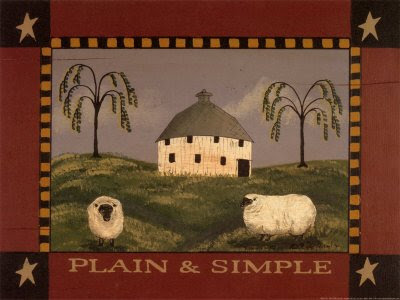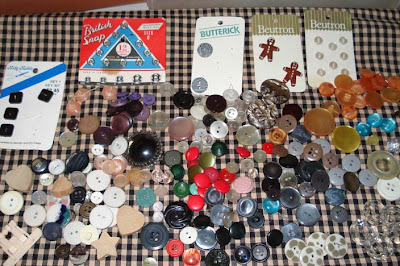
These photos were all taken this morning. Early morning, before the sun hits the vegetables, is the best time to walk around looking for bugs or potential problems. Observation is the key to growing good vegies. You need to know what's happening out there and help the plants along if you notice something going wrong.
I had to buy tomatoes yesterday. We had some of our own and some from my step son's garden but with three avid tomato eaters here at the moment, the time came to go to the store to buy them. Yikes! $5 a kilo for plain old tasteless tomatoes, $10 kg for the "vine ripened" ones. I had a look around at the other vegies - $7/kilo for capsicums (peppers), $4 for a lettuce, $3.50 for a bunch of radishes and the long cucumbers were $3.80 each. It would have cost about $20 just for a couple of salads. I hate to think what the same vegetables would cost if I was buying organic produce. Luckily I only had to buy the tomatoes, we had everything else.

French radishes. These are $3.50 at the store, but are easily grown fresh and organic in the back yard for the price of the seeds and a bit of work planting and watering.
That's the great benefit of growing your own, not only are they organic, they're also fresher, tastier and you're protected from the spikes in prices when there's been a drought, storms or cyclones.

Zucchini. We have just planted the follow ups to these - yellow zucchini. By the time the yellows are ready, these will be pulled out.
I've written about starting a new vegetable garden
here so I won't go over that again. I want to give those of you who have started your first vegie gardens, or who are about to, a few tips that I hope will help you grow your vegetables.

Nectarines ripening in the warm sun. No fruit you buy will ever taste as good as that from your own backyard.
Almost all uncontaminated soil will grow food, but with a bit of help, the soil in your back yard will produce very good crops instead of mediocre ones. The one thing that will make the biggest difference is to add aged manure to the soil. Your aim should be to add as much organic matter as possible, but if you can only add one thing, let it be old manure. If you can add compost with the manure you're on your way to good soil, and good soil will give good crops. If you're lucky enough to have your own animals, when you buy manure, or if it is given to you, make sure the animals have not recently been wormed. Manure from wormed animals will kill the worms in your soil. You want to encourage worms, they enrich your soil. At the same time you're developing your vegetable garden you should also start a compost pile or bin. The two go hand-in-hand.

These are Richmond green apple cucumbers which were a popular variety of cucumber in Australia in the 1950s. You can't buy these at the supermarket now, they are only available in seed form to grow in your own vegie garden. The taste is sensational.

And the follow ups to the Richmond cucumbers - Lebanese cucumbers that will be picked small and crunchy in about 8 weeks time.
Think of your soil as a cake. Sure, you can make a cake from a packet and you have a cake. But you can also make a cake using organic flour, backyard eggs, good butter, homegrown carrots, walnuts and spices and you get healthy, delicious cake that everyone will enjoy. The packet cake will fill you but the homemade cake will not only fill your belly, it will add to your nutrition.

A variety of lettuces - red, Cos, butter and frilly. All fresh and waiting to be picked for a salad.
So let's imagine you've added some aged horse or cow manure to your soil, along with your homemade compost. You dig it in (my preferred way) or you add it to your layers in a no dig garden bed. If you can afford to buy a good organic fertiliser, do so, if you can't, buy some
blood and bone and
sulphate of potash and use them. The blood and bone will add nitrogen, calcium and phosphorus - all necessary for good plant growth and the potash will induce flowering. The ratio is one handful of potash to 10kg of blood and bone. Sprinkle that over your new garden and dig in, along with the manure and compost.

Green lake beans. Hanno loves these cooked - either hot or in a salad. I like them eaten raw straight from the vine.
Now you're ready to plant your seeds or seedlings. You're planting into good soil, so you want to give your plants the best chance to thrive. Get yourself some seaweed concentrate. I use Natrakelp when I can afford it and Seasol when I can't. There is some good info
here about organic fertilisers, including Natrakelp. Seaweed concentrate, properly diluted, will help your seedlings over the shock of transplanting. I water my plants with a weak solution of seaweed concentrate every couple of weeks to keep everything healthy. A good trick is to pour some diluted seaweed into a small container before you plant your seedlings. Allow the seedlings to sit in the seaweed for about 30 minutes before you plant. Then plant out and water in. Then pour on some more seaweed to settle the plant in nicely.

The follow ups to the tomatoes. We have tomatoes in large pots, sweet bites and tommy toes in various places in the garden and quite a few planted in the aquaponics garden. One of these is a yellow pear tomatoes, I'm not sure what the others are. In the pots we have Armish paste, beefsteaks and brandywines, in the aquaponics we have dwarf pear, sweet bites and beefsteaks.
Now a word of warning. Never over fertilise your plants. If you start your garden in a similar way to the outline above, you won't need to fertilise much at all. I make up a liquid comfrey fertiliser or worm juice for the leafy greens and apply that every two weeks. Things like tomatoes, peppers and beans, I just plant into rich soil and keep watered. The rule of thumb is you give nitrogen to the leafy greens and a small amount of potash (when planting) to the fruiting plants like tomatoes, beans, zucchinis etc. Give a good deep watering maybe twice a week, depending on your climate, and three times a week in the heat of summer. Try to water your plants in the early morning as this will help you avoid the diseases of humidity like powdery mildew.
There are many reasons to start growing your own food. It's really enjoyable, you can grow organic food for a minimal price, it's as fresh as it can possibly be when you eat it and it has no pesticides or herbicides. But now it will also save you money and ensure your supply of vegetables when the supply might be a bit tight at the shop.













































